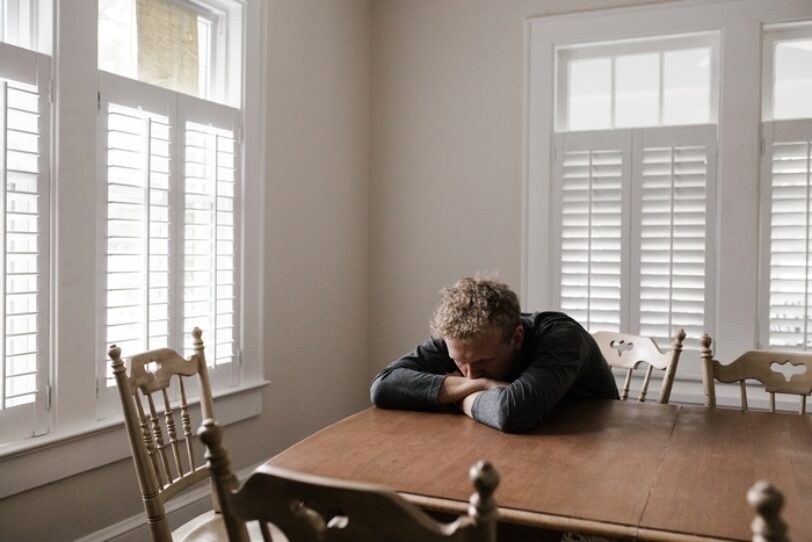
On this page
Struggling with OCD? CHE Behavioral Health Services is your answer with tailored obsessive compulsive disorder therapy. See how we can help.
What is Obsessive Compulsive Disorder (OCD)?
Obsessive-compulsive disorder (OCD) is a mental health condition in which people have recurring, unwanted thoughts, urges/sensations, or mental images (obsessions), and/or repetitive behaviors (compulsions), which the person feels compelled to perform usually in response to obsessive thoughts. Obsessive-compulsive disorder most commonly includes both obsessions and compulsions, but it is also possible to have only obsession symptoms or only compulsion symptoms.
Many people experience unwanted and intrusive thoughts at times. However, these are not the same as obsessive thoughts in OCD. Obsessions in OCD are persistent and time consuming, resulting in a great deal of effort to ignore, suppress, and/or reduce the distress association with these thoughts or urges. Although persons with OCD usually have insight that the thought is unrealistic, they feel powerless to control the recurring obsessions.
Similarly, not all rituals or habits are compulsions. Everyone double checks things occasionally, and this extra check can provide a sense of reassurance or relief (e.g., checking you locked the doors). Again, however, such checking behaviors are infrequent and do not disrupt the person’s functioning. Compulsions in OCD, on the other hand, are repetitive behaviors or mental acts that are meant to reduce anxiety related to obsessions or prevent something bad from happening. They are excessive and often not realistically related to the problem they are intended to fix.
OCD is a mental health disorder with specific diagnostic criteria. A diagnosis of OCD requires the presence of obsessions and/or compulsions that are time-consuming, i.e., last more than one hour a day, cause significant emotional distress, and impair work/school or social functioning. And although the person may feel a brief sense of relief after engaging in a compulsion to reduce the anxiety an obsessive thought causes, he or she does not get pleasure from engaging in the ritual.
Types of Obsessive Compulsive Disorder (OCD):
OCD symptoms come in many forms, and the blend of obsessive and compulsive symptoms are unique to each person. With that said, obsessions and compulsions in OCD often center around four main themes. These are not mutually exclusive, and a person can experience elements from one or more of these themes. Below is a description of the four most common OCD symptoms types:
Contamination:
Contamination OCD symptoms are driven by an underlying fear of contamination or germs. People will go to great lengths to either avoid situations they believe can contaminate them or will engage in protective rituals to prevent getting sick from germs. These rituals (compulsions) may include excessive hand washing, frequently changing clothes, showering, disinfecting, sterilizing, and other excessive cleaning behaviors.
Perfection:
OCD symptoms in the “perfection” type are driven by a preoccupation with order, perfection, and getting something “just right.” People with these symptoms will, for example, spend excessive time in compulsive rituals that involve counting, moving, arranging things. The rituals are often attached to “magical thinking” – the belief that something bad will happen if it's not “right.”
Doubt and Harm (Checking and Rechecking):
People with these ODC symptoms experience unwanted, intrusive, and very distressing thoughts, images or urges related to the fear of unintentionally harming themselves or someone else. These are often fueled from a fear of being careless or negligent and a dread of being responsible if something bad happens. A common obsessive fear in this type, for example, may be leaving the gas stove on and causing a fire. To relieve the discomfort of this intrusive thought, the person may check and re-check the stove compulsively. Other common compulsions in this type of OCD include checking door locks, windows, light switches, etc., or mentally reviewing one’s daily activities to retrace one’s steps and make sure nothing was done that could have harmed another person. The person may also develop a ritual of needing to check something a very specific number of times.
Forbidden Thoughts:
The symptoms of this type of OCD are driven by unwanted and intrusive thoughts often characterized by violence, religion or sexual content that significantly violates the person’s morals or values. Despite the nature of these thoughts, people with this type of OCD usually have no history of violence and do not act on these thoughts or urges. Nonetheless, they experience significant fear they will act on these thoughts or by having them they are a bad person. Because they believe their thoughts to be dangerous, they will devote excessive amounts of time in an effort to suppress them. People with this type of OCD do not typically engage in behavioral rituals to manage these unwanted thoughts. Rather, the rituals they perform tend to be covert and consist of mental compulsions and seeking reassurance, such as excessive mental praying if they have a thought believed to be blasphemous.
Examples of Obsessive Thoughts:
- Fear of germs and getting contaminated by people or the environment, e.g., fear of touching doorknobs, using public toilets, or shaking hands
- Symmetry and balance, e.g., thoughts of needing things symmetrical or in perfect order
- Worries about oneself or other people getting hurt
- Doubts that the door is locked or stove is turned off
- Unwanted forbidden or taboo thoughts or images involving things like sex or religion
- Thoughts of aggression/impulsivity towards self or others, such as thoughts about losing control and harming oneself or others (e.g., driving one’s car into a crowd of people), shouting obscenities, blurting out insults, or acting inappropriately in public
Examples of Compulsive Behaviors:
- Doing tasks in a specific order every time or a certain “good” number of times
- Counting rituals, e.g., needing to count things, like steps or bottles
- Ordering or arranging things in a particular way
- Repeatedly checking on things, such as repeatedly checking to see if the door is locked or that the oven is off
- Excessive cleaning and sterilizing
- Excessive or ritualized hand washing, showering, or brushing teeth
- Constantly seeking approval or reassurance

Onset and Course of OCD:
OCD often begins in childhood, adolescence, or early adulthood, with the average age of symptom onset being 19 years old. Symptoms usually begin gradually and may vary in severity throughout life. Some individuals have more mild to moderate symptoms, whereas others experience severe symptoms that are quite disabling. Symptoms of OCD often worsen when a person is experiencing greater stress levels. The types of obsessions and compulsions can also change over time.
OCD Causes and Risk Factors:
The cause of OCD is not fully understood. Like most mental health disorders, theories include a combination of biological and environmental components.
Biology: OCD may be a result of differences in brain structures and functions, as well as differences in the brain’s neurochemistry. Genetics may also play a role, as there is a higher degree of developing OCD within first degree relatives.
Environment: It is possible that specific OCD symptoms are learned from watching family members model these obsessive fears and compulsive behaviors. A history of trauma, abuse, or other stressful life events may also increase a person’s risk of developing OCD.
Treatment for OCD:
If you are experiencing obsessive thoughts or compulsive behaviors that are impacting your quality of life or negatively impacting your ability to function at work, school, or in your social relationships, you should consider seeking out treatment for OCD. The good news is that most patients respond very well to treatment. Treatment for OCD typically entails psychotherapy, medication, or both.
Psychotherapy:
In psychotherapy (talk therapy), people learn to cope with their obsessions without relying on ritualistic behaviors, which decreases their anxiety over time. The most common treatment modalities utilized in psychotherapy for OCD are Cognitive Behavioral Therapy (CBT) and sub-component of CBT called Exposure and Response Prevention (ERP). In CBT treatments, the person learns how to change unhelpful thinking patterns by challenging unrealistic thoughts and replacing them with more realistic thinking. In ERP, the client is gradually exposed to a feared object or obsession and learns ways to resist the urge to perfume the compulsive behavior. Exposure plans move from lower anxiety situations to higher anxiety situations. In this effort, people learn to cope with their obsessions without relying on ritualistic behaviors, and their anxiety decreases over time. Learning and practicing relaxation strategies, such as meditation and yoga can also help manage and relieve the intensity of OCD symptoms.
Medication:
The class of psychotropic medications typically prescribed for OCD are selective serotonin reuptake inhibitors (SSRIs). These fall under the category of antidepressant medications but are used effectively in the management of chronic anxiety symptoms. These medications typically take many weeks to become fully effective.
Deep brain stimulation (DBS):
DBS is approved by the FDA to treat OCD in adults who do not respond to traditional treatment approaches. DBS involves implanting electrodes within certain areas of the brain to change the electrical activity.
Transcranial magnetic stimulation (TMS):
TSM is approved to treat OCD in adults when traditional treatment approaches have not been effective. TMS is a noninvasive procedure that uses magnetic fields to stimulate nerve cells in the parts of the brain that regulate OCD symptoms.
Telehealth for OCD:
According to the International OCD Foundation, teletherapy has been utilized over the past decade to deliver psychotherapy to both adults and children with OCD. Research has found that teletherapy is an effective service delivery approach for providing exposure and response prevention (ERP) treatment. Patients with OCD who receive appropriate treatment, including through teletherapy, experience an improved quality of life and functioning.
Learn more about our Telehealth Services >
* If you feel you are experiencing a crisis that needs immediate attention or you believe you are a danger to yourself or others, please go to your nearest emergency room OR call 911 or the National Suicide Prevention Hotline: 1-800-273-8255.*
For additional resources and immediate assistance, please click below:
http://suicideprevention.wikia.com
